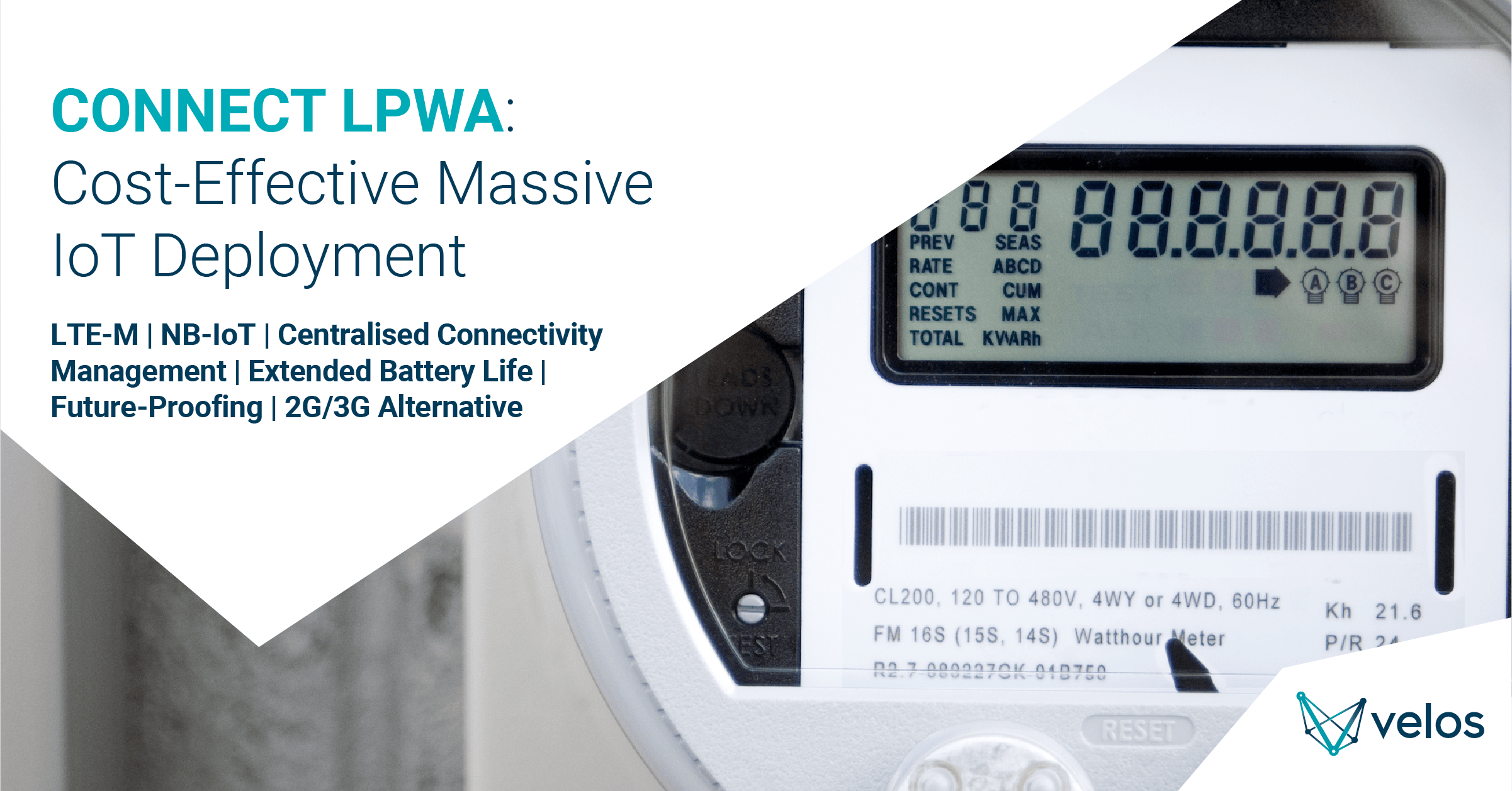Velos IoT’s Connect LPWA solution offers one of the largest Low Power Wide Area coverage in the market—aimed at resellers, enterprises, and OEMs who are currently on 2G and 3G networks and want energy-efficient devices deployed worldwide with reduced cost and maximized battery life.
As a result of Mobile Network Operators launching 5G services, many are having to reuse spectrum currently allocated to 2G and 3G networks. Businesses need to plan and find alternative replacements for these networks as early as possible to minimize the impact on their business. So, it is not a question of if but when to deploy LPWA technology for IoT connectivity.
The solution offers connectivity on the two most popular LPWA technologies – NB-IoT and CAT-M1. NB-IoT connectivity is currently available on 47 networks in 35 countries, with LTE-M (CAT-M1) it’s 77 networks in 42 countries, and the list is constantly growing. Both options support low-power features like PSM (Power Saving Mode) and eDRX (extended Discontinuous Reception); users can allocate dynamic and fixed IPs and connect securely through custom APNs, all of which are managed on the Nomad Connectivity Management Platform with a single invoice.
The Connect LPWA solution will help to maximise the lifetime of devices with efficient battery management on an IoT network technology designed for the future.
NB-IoT is best suited for stationary applications with hourly data transfer frequency or a few times per hour and low to medium transmission rates. The most common NB-IoT use cases are meters, parking, street lights, smart home appliances and environment management devices.
CAT-M1 is best suited for non-stationary applications with one every few minutes data transfer frequency and transmission rates in the high kbps to low mbps levels. The most common CAT-M1 use cases are rental vehicles, fleet management, cold chain monitoring and asset tracking.




 Contact Company
Contact Company



